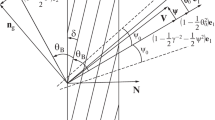Diffracted transition radiation (DTR) emitted by a beam of relativistic electrons traversing a thin single-crystal plate in the Laue scattering geometry is considered. An expression has been obtained describing the angular DTR density when the electron path length in a target is far less than the extinction length of x-rays in the crystal. It is shown that in this case, the DTR process has a clearly pronounced kinematic character. Numerical calculations of the DTR photon yield in the direction of Bragg’s scattering performed for different solid angles of recording show that it is significantly affected by the electron beam divergence. We have concluded that the DTR photon yield measured for a given solid angle can be used for indicating the electron beam divergence. Results of model calculations of the electron beam divergence parameters for a given yield of DTR photons traversing the slit collimator have shown that the formula proposed in this work can be successfully used as a basis for the development of methods for measuring the divergence of ultrahigh-energy relativistic electron beams based on the angular DTR distribution.
Similar content being viewed by others
References
ILC Technical Design Report (2013); http://ww2.linearcollider.org/ILC/Publications/Technical-Design-Report.
M. Aicheler, ed., A Multi-TeV linear collider based on CLIC technology: CLIC Conceptual Design Report, CERN (2012).
Y. Takabayashi, Phys. Lett. A, 376, 2408 (2012).
Y. Takabayashi and K. Sumitani, Phys. Lett. A, 377, 2577 (2013).
B. N. Kalinin, A. P. Potylitsin, V. A. Verzilov, et al., Nucl. Instrum. Methods Phys. Res. A, 350, 601 (1994).
A. Gogolev, A. Potylitsyn, and G. Kube, J. Phys. Conf. Series, 357, 012018 (2011).
A. Caticha, Phys. Rev. A, 40, 4322 (1989).
V. Baryshevsky, Nucl. Instrum. Methods A, 122, 13 (1997).
X. Artru and P. Rullhusen, Nucl. Instrum. Methods B, 145, 1 (1998).
N. Nasonov, Phys. Lett. A, 246, 148 (1998).
S. V. Blazhevich, G. A. Grazhdankin, R. A. Zagorodnyuk, and A. V. Noskov, Nucl. Instrum. Methods Phys. Res. B, 355, 170–174 (2015).
Author information
Authors and Affiliations
Corresponding author
Additional information
Translated from Izvestiya Vysshikh Uchebnykh Zavedenii, Fizika, No. 6, pp. 100–112, June, 2020.
Rights and permissions
About this article
Cite this article
Blazhevich, S.V., Bronnikova, M.V. & Noskov, A.V. Diffracted Transitive Radiation as a Means for Indicating the Divergence of an Ultrarelativistic Electron Beam. Russ Phys J 63, 1010–1024 (2020). https://doi.org/10.1007/s11182-020-02131-2
Received:
Published:
Issue Date:
DOI: https://doi.org/10.1007/s11182-020-02131-2




